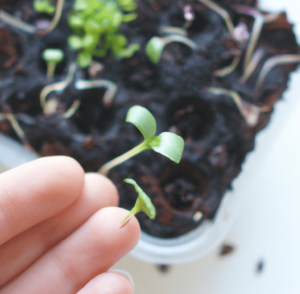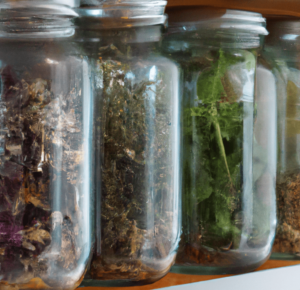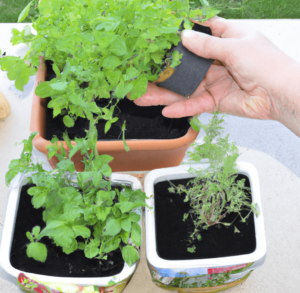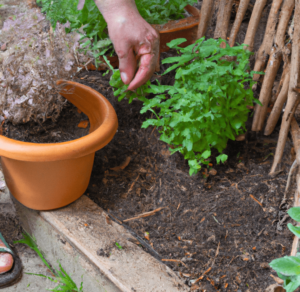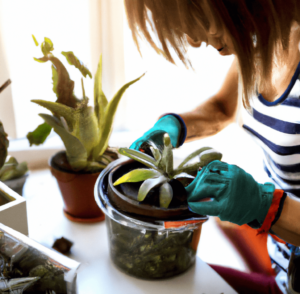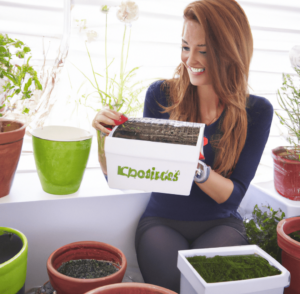Biodynamic gardening is a holistic approach to growing crops that takes into account the interconnections between the earth, the plants, and the larger environment. This method of gardening was developed in the 1920s by Austrian philosopher Rudolf Steiner, who believed that the health and vitality of the soil, plants, and animals are all interconnected and can be enhanced through specific techniques and practices.
Biodynamic gardening involves a focus on the health and vitality of the soil, which is seen as the foundation of a healthy and productive garden. This involves using organic matter to enrich the soil, as well as incorporating techniques such as crop rotation and companion planting to build soil fertility and diversity. Biodynamic gardeners also pay close attention to the rhythms and cycles of nature, using lunar and astrological calendars to guide their planting and harvesting.
In addition to these practices, biodynamic gardeners often use specially prepared biodynamic preparations, which are made from herbs, minerals, and other natural substances and are believed to enhance the vitality and health of the soil and plants. These preparations are typically applied to the soil or sprayed on the plants at specific times of the year, following the rhythms and cycles of nature.
Biodynamic gardening is based on the belief that the health of the soil and plants is closely connected to the health of the larger environment, and that by working with these interconnections, it is possible to grow healthy and nourishing crops. This approach to gardening offers a holistic and sustainable way to cultivate the land and produce food.
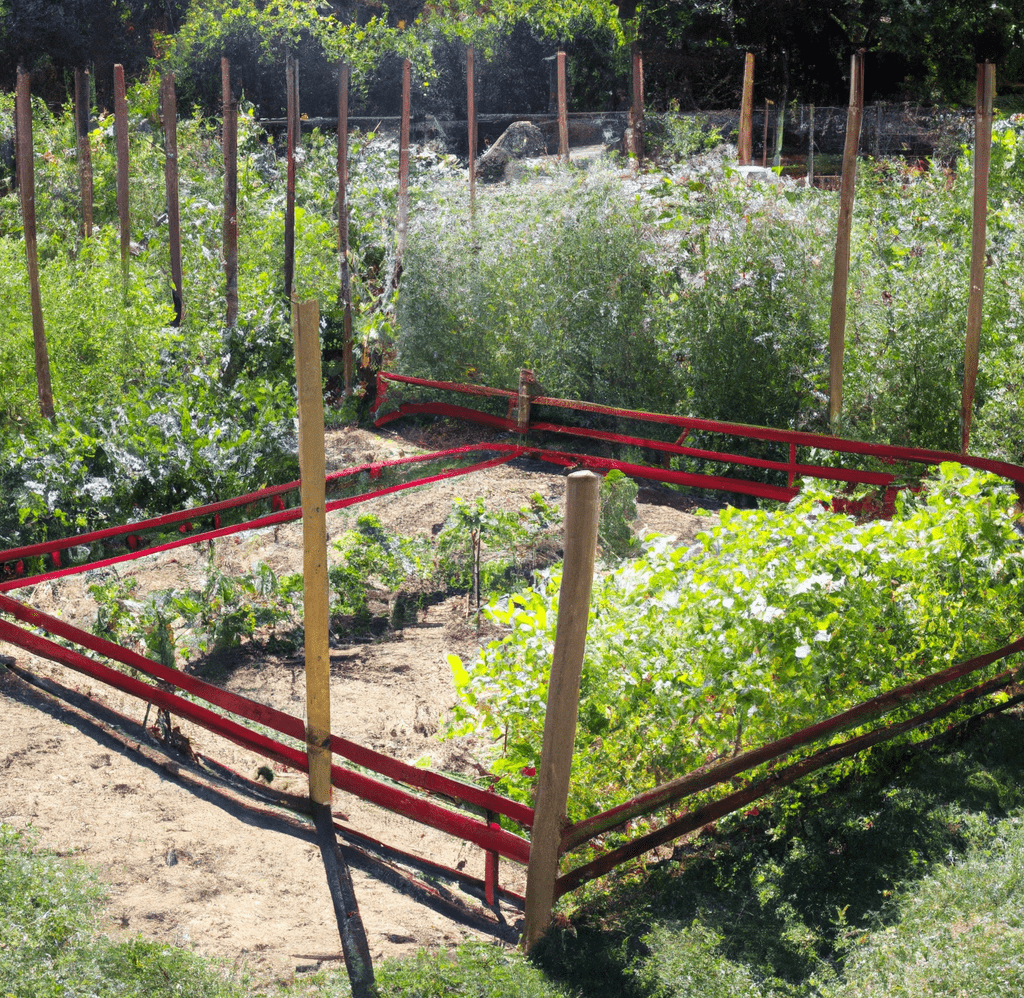
Biodynamic Gardening Practices
Biodynamic gardening is a healthy and holistic approach to growing crops that involves a number of specific practices and techniques. These practices are designed to enhance the vitality and health of the soil, plants, and larger environment, and are based on the belief that the health of these elements is interconnected. Some of the key practices and techniques involved in biodynamic gardening include:
- Composting: Biodynamic gardeners place a strong emphasis on the use of compost to enrich and revitalize the soil. This may involve using specially prepared biodynamic compost, which is made using techniques and ingredients designed to enhance the health and fertility of the soil.
- Crop rotation and companion planting: Biodynamic gardeners often use techniques such as crop rotation and companion planting to build soil fertility and diversity. Crop rotation involves growing different crops in a specific area of the garden each year, while companion planting involves planting different types of crops together in order to benefit from their complementary effects on the soil and each other.
- Biodynamic preparations: These are specially prepared substances made from herbs, minerals, and other natural materials, which are believed to enhance the vitality and health of the soil and plants. These preparations are typically applied to the soil or sprayed on the plants at specific times of the year, following the rhythms and cycles of nature.
- Attention to the rhythms and cycles of nature: Biodynamic gardeners pay close attention to the rhythms and cycles of nature, using lunar and astrological calendars to guide their planting and harvesting.
- Holistic approach to farming: Biodynamic gardening is based on the belief that the health of the soil and plants is closely connected to the health of the larger environment, and that by working with these interconnections, it is possible to grow healthy and nourishing crops. This holistic approach to farming involves taking a holistic view of the farm or garden as a whole, and considering the impacts of all activities on the health and vitality of the land.
Biodynamic Agriculture and Farming
Biodynamic agriculture is a method of farming that is based on the principles and practices of biodynamic gardening, and is often used in conjunction with biodynamic gardening on a larger scale. Like biodynamic gardening, biodynamic agriculture is based on the belief that the health of the soil, plants, and animals are all interconnected, and that by working with these interconnections, it is possible to produce healthy and nourishing food.
Biodynamic agriculture was developed by Austrian philosopher Rudolf Steiner in the 1920s, and involves the use of biodynamic preparations and techniques such as crop rotation and companion planting to enhance the health and fertility of the soil and the vitality of the crops. Biodynamic farmers may also incorporate livestock into their operations, using techniques such as rotational grazing to enhance the health and productivity of the land.
Biodynamic agriculture can be practiced on a wide range of scales, from small family farms to large commercial operations. Some biodynamic farms are certified by organizations such as Demeter International, which sets standards for biodynamic farming and gardening practices and verifies that these standards are being met.
In addition to the techniques and practices used in biodynamic gardening, biodynamic agriculture often involves the use of specially prepared biodynamic composts and other preparations to enhance the fertility and health of the soil. These preparations are typically made using natural ingredients and are applied to the soil or sprayed on the plants at specific times of the year, following the rhythms and cycles of nature. Biodynamic agriculture is based on the belief that by working with the natural rhythms and cycles of nature, it is possible to produce healthy, nourishing food in a sustainable and holistic manner.
The Benefits of a Biodynamic Approach to Farming
Adopting a biodynamic approach to farming can bring a number of benefits, both for the crops being grown and for the health of the land itself. Some of the key benefits of biodynamic farming include:
- Healthier crops: By focusing on the health and vitality of the soil and using techniques such as crop rotation and companion planting, biodynamic farmers are able to grow healthier and more nourishing crops. Biodynamic preparations and other techniques may also enhance the health and vitality of the crops themselves, helping them to resist pests and diseases and produce higher yields.
- Healthier soil: Biodynamic farming practices are designed to enhance the health and fertility of the soil, which is seen as the foundation of a healthy and productive farm. By using techniques such as composting and paying attention to the rhythms and cycles of nature, biodynamic farmers are able to build soil fertility and diversity, which can lead to healthier and more productive crops in the long run.
- Sustainable approach: Biodynamic farming is based on a holistic and sustainable approach to cultivating the land. By taking into account the interconnections between the earth, the plants, and the larger environment, biodynamic farmers are able to produce food in a way that is sustainable and nourishing for all aspects of the farm ecosystem.
- Connection to the land: Biodynamic farming involves a strong connection to the land and the rhythms and cycles of nature. This can be a rewarding and fulfilling experience for farmers, and can help to create a sense of harmony and balance on the farm.
Overall, a biodynamic approach to farming can help to produce healthier and more nourishing crops, while also promoting the health and fertility of the soil and the larger environment. This holistic and sustainable approach to farming offers a rewarding and fulfilling way to cultivate the land and produce food.
Biodynamic Agriculture: A Holistic Approach to Farming
Biodynamic agriculture is a holistic approach to farming that takes into account the interconnections between the earth, the plants, and the larger environment. This method of farming was developed by Austrian philosopher Rudolf Steiner in the 1920s, and is based on the belief that the health and vitality of the soil, plants, and animals are all interconnected and can be enhanced through specific techniques and practices.
Biodynamic agriculture involves a focus on the health and vitality of the soil, which is seen as the foundation of a healthy and productive farm. This may involve using techniques such as crop rotation and companion planting to build soil fertility and diversity, as well as incorporating organic matter to enrich the soil. Biodynamic farmers may also use specially prepared biodynamic preparations, which are made from herbs, minerals, and other natural substances and are believed to enhance the vitality and health of the soil and plants. These preparations are typically applied to the soil or sprayed on the plants at specific times of the year, following the rhythms and cycles of nature.
In addition to these practices, biodynamic farmers often pay close attention to the rhythms and cycles of nature, using lunar and astrological calendars to guide their planting and harvesting. This holistic approach to farming is based on the belief that by working with the natural rhythms and cycles of the land, it is possible to produce healthy and nourishing food in a sustainable manner.
Overall, biodynamic agriculture is a holistic and sustainable approach to farming that focuses on the health and vitality of the soil, plants, and larger environment. By working with the interconnections between these elements, biodynamic farmers are able to produce healthy and nourishing food in a way that is sustainable and nourishing for the land.
Biodynamic Practices for Enhancing the Health of the Land
Biodynamic practices are techniques and approaches used in biodynamic gardening and farming that are designed to enhance the health and vitality of the soil, crops, and larger environment. Some of the key biodynamic practices for enhancing the health of the land include:
- Composting: Using compost to enrich the soil is a key biodynamic practice for enhancing the health of the land. Biodynamic compost is made using techniques and ingredients that are believed to enhance the fertility and health of the soil.
- Crop rotation and companion planting: These techniques involve growing different crops in a specific area of the garden or farm each year, and planting different types of crops together in order to benefit from their complementary effects on the soil and each other. These practices can help to build soil fertility and diversity, and can also help to reduce the need for synthetic fertilizers and pesticides.
- Biodynamic preparations: These specially prepared substances, made from herbs, minerals, and other natural materials, are believed to enhance the vitality and health of the soil and plants. These preparations are typically applied to the soil or sprayed on the plants at specific times of the year, following the rhythms and cycles of nature.
- Attention to the rhythms and cycles of nature: Biodynamic practitioners pay close attention to the rhythms and cycles of nature, using lunar and astrological calendars to guide their planting and harvesting. This helps to align their activities with the natural rhythms of the land, which can enhance the health and vitality of the crops.
Overall, biodynamic practices are designed to enhance the health and vitality of the soil, crops, and larger environment, and to produce healthy and nourishing food in a sustainable manner. By working with the interconnections between these elements, biodynamic practitioners are able to cultivate the land in a holistic and sustainable way.
The Importance of Soil in Biodynamic Practices
Soil is a crucial element of any garden or farm, and is especially important in biodynamic practices. In biodynamic gardening and farming, the health and vitality of the soil is seen as the foundation of a healthy and productive land. As such, biodynamic practitioners place a strong emphasis on enhancing the health and fertility of the soil through a range of specific practices and techniques.
Some of the key biodynamic practices for enhancing the health of the soil include:
- Composting: Using compost to enrich the soil is a key biodynamic practice. Biodynamic compost is made using techniques and ingredients that are believed to enhance the fertility and health of the soil.
- Incorporating organic matter: Adding organic matter to the soil, such as leaves, grass clippings, and other plant debris, can help to enrich the soil and improve its structure.
- Crop rotation and companion planting: These techniques involve growing different crops in a specific area of the garden or farm each year, and planting different types of crops together in order to benefit from their complementary effects on the soil and each other. These practices can help to build soil fertility and diversity, and can also help to reduce the need for synthetic fertilizers and pesticides.
- Biodynamic preparations: These specially prepared substances, made from herbs, minerals, and other natural materials, are believed to enhance the vitality and health of the soil and plants. These preparations are typically applied to the soil or sprayed on the plants at specific times of the year, following the rhythms and cycles of nature.
Overall, the health and vitality of the soil is central to biodynamic practices, and biodynamic practitioners take a number of specific steps to enhance the fertility and health of the soil in order to produce healthy and nourishing crops.
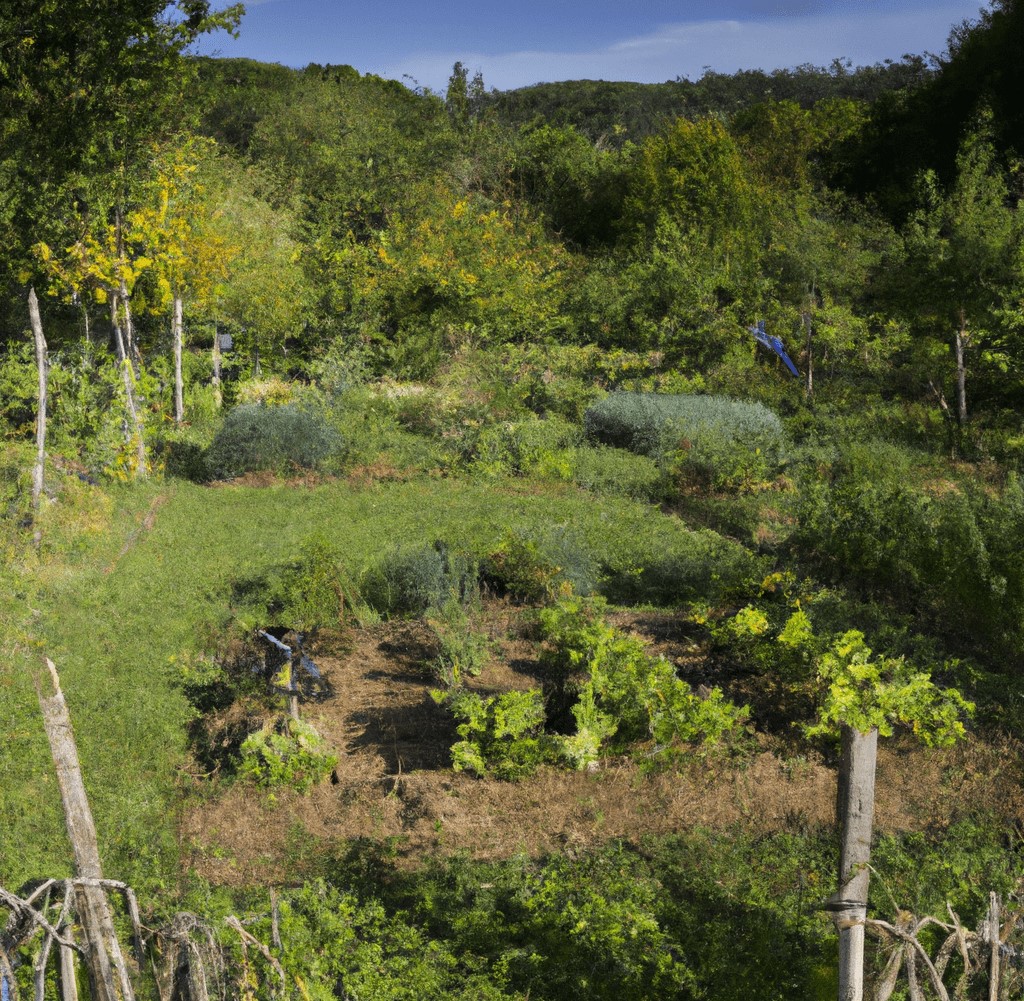
The Role of Seeds in Biodynamic Practices
Seeds play a crucial role in biodynamic practices, as they are the starting point for the growth of the plants that will ultimately be grown in the garden or on the farm. Biodynamic practitioners place a strong emphasis on the quality and vitality of the seeds they use, and may take a number of specific steps to enhance the health and productivity of their plants.
Some of the key biodynamic practices related to seeds include:
- Using high-quality seeds: Biodynamic practitioners often place a strong emphasis on the quality of the seeds they use, seeking out seeds that are healthy, vital, and well-suited to their particular growing conditions.
- Soaking seeds before planting: Some biodynamic practitioners soak their seeds in water or special preparations before planting, in order to enhance the vitality and germination of the seeds.
- Planting according to the calendar: Biodynamic practitioners often use lunar and astrological calendars to guide their planting and harvesting, in order to align their activities with the natural rhythms and cycles of nature.
- Using compost and other preparations: Biodynamic practitioners may use specially prepared compost and other preparations to enrich the soil and enhance the health and vitality of the plants.
Overall, the quality and vitality of the seeds used in biodynamic practices is an important factor in the health and productivity of the plants that are grown. By taking steps to enhance the health and vitality of the seeds, biodynamic practitioners are able to grow healthy and nourishing crops.
The Role of the Calendar in Biodynamic Agriculture
In biodynamic agriculture, the calendar plays a crucial role in guiding the timing of planting and harvesting, as well as other practices such as the application of biodynamic preparations. Biodynamic practitioners often use both lunar and astrological calendars to guide their activities, in order to align them with the natural rhythms and cycles of nature.
The biodynamic planting calendar is a specific type of calendar that is used by biodynamic practitioners to guide the timing of planting and harvesting. This calendar takes into account the phases of the moon, as well as other astrological factors, in order to determine the best times for planting and harvesting specific crops.
In addition to the planting calendar, biodynamic practitioners may also use the calendar to guide other practices, such as the application of biodynamic preparations to the soil or plants. These preparations are typically applied at specific times of the year, following the rhythms and cycles of nature.
Overall, the calendar plays an important role in biodynamic agriculture, helping to guide the timing of planting and harvesting, as well as other practices such as the application of biodynamic preparations. By aligning their activities with the natural rhythms and cycles of nature, biodynamic practitioners are able to enhance the health and productivity of their crops and the land.
The Role of Organic Practices in Biodynamic Agriculture
Organic practices play an important role in biodynamic agriculture, which is a holistic and sustainable approach to farming that takes into account the interconnections between the earth, the plants, and the larger environment. In biodynamic agriculture, the use of organic practices is seen as an essential part of cultivating the land in a healthy and sustainable manner.
Some of the key organic practices used in biodynamic agriculture include:
- Composting: The use of compost is a key organic practice in biodynamic agriculture, as it helps to enrich the soil and build its fertility and diversity. Biodynamic compost is made using techniques and ingredients that are believed to enhance the health and vitality of the soil.
- Incorporating organic matter: Adding organic matter to the soil, such as leaves, grass clippings, and other plant debris, can help to enrich the soil and improve its structure.
- Avoiding synthetic chemicals: Biodynamic agriculture involves a commitment to avoiding the use of synthetic chemicals such as fertilizers and pesticides, which can be harmful to the health of the soil and the environment.
- Using biodynamic preparations: In addition to traditional organic practices, biodynamic agriculture often involves the use of specially prepared biodynamic preparations, which are made from herbs, minerals, and other natural substances. These preparations are believed to enhance the vitality and health of the soil and plants, and are typically applied to the soil or sprayed on the plants at specific times of the year, following the rhythms and cycles of nature.
Overall, the use of organic practices is an essential part of biodynamic agriculture, and helps to promote the health and vitality of the soil, plants, and larger environment. By working with the natural rhythms and cycles of nature, biodynamic practitioners are able to cultivate the land in a sustainable and nourishing manner.
The Concept of Gaia in Biodynamic Practices
The concept of Gaia is central to biodynamic practices, which are based on the belief that the earth, plants, and animals are all interconnected and that by working with these interconnections, it is possible to cultivate the land in a healthy and sustainable manner.
The concept of Gaia, named after the ancient Greek goddess of the earth, was developed by James Lovelock in the 1970s. It proposes that the earth is a self-regulating system, with the living and nonliving components of the planet working together to maintain the conditions necessary for life.
In biodynamic practices, the concept of Gaia is often seen as a guiding principle, with practitioners working to enhance the health and resilience of the land and its various components. This may involve using techniques such as composting and crop rotation to enhance the health and fertility of the soil, as well as incorporating livestock into the farming operation in a way that promotes the health of the land.
Biodynamic practitioners may also use the concept of Gaia to guide their choice of seeds and other plant materials, seeking out varieties that are well-suited to their particular growing conditions and that are likely to thrive in their local environment.
Overall, the concept of Gaia is central to biodynamic practices, and is seen as a guiding principle for cultivating the land in a healthy and sustainable manner. By working with the interconnections between the earth, plants, and animals, biodynamic practitioners are able to enhance the resilience and health of the land and its various components.
Bottom Line: Biodynamic Gardening is a Holistic and Sustainable Approach to Farming
Biodynamic gardening is a method of gardening that is based on the principles and practices of biodynamic agriculture, which is a holistic and sustainable approach to farming that takes into account the interconnections between the earth, the plants, and the larger environment. Biodynamic gardening involves using techniques such as composting, crop rotation, and companion planting to enhance the health and fertility of the soil, as well as incorporating biodynamic preparations and other techniques to enhance the vitality and health of the crops. Biodynamic gardening is based on the belief that the health of the soil, plants, and animals are all interconnected, and that by working with these interconnections, it is possible to produce healthy and nourishing food in a sustainable and holistic manner.
If you’re interested in biodynamic gardening, you may also be interested in back to eden gardening and companion planting gardening.


